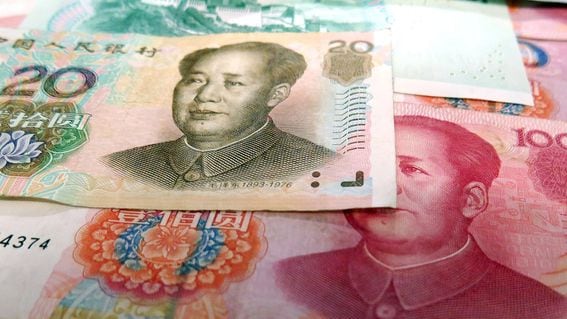- China’s surprise rate cut signals panic, adds to risk aversion in the market.
- The steepening of the U.S. Treasury yield curve is the biggest risk, one observer said.
Risk assets slid Thursday as China’s second interest-rate cut in a week sparked concerns of instability in the world’s second-largest economy.
Bitcoin (BTC), the leading cryptocurrency by market value, fell almost 2% since midnight UTC to around $64,000 and ether (ETH) dropped more than 5%, dragging the wider altcoin market lower. The CoinDesk 20 Index (CD20), a measure of the broader crypto market, lost 4.6% in 24 hours.
In equity markets, Germany’s DAX, France’s CAC and the eurozone’s Euro Stoxx 50 fell over 1.5%, and futures tied to the tech-heavy Nasdaq 100 were slightly lower after the index’s 3% slide on Wednesday, according to data source Investing.com.
Early Thursday, the People’s Bank of China (PBoC) announced a surprise, off-schedule cut in its one-year medium-term lending facility rate to 2.3% from 2.5%, injecting 200 billion yuan ($27.5 billion) of liquidity into the market. That’s the biggest reduction since 2020.
The move, along with similar reductions in other borrowing rates early this week, shows urgency among policymakers to shore up growth after its recent third plenum offered little hope of a boost. Data released early this month showed China’s economy expanded by 4.7% in the second quarter at an annualized pace, much weaker than the estimated 5.1%, and slower than first quarter’s 5.3%.
“Equity futures are stable after yesterday’s bloody session that shook views across all asset classes,” Ilan Solot, senior global strategist at Marex Solutions, said in a note shared with CoinDesk. “The decision by the PBoC to cut rates in a surprise move only added to the sense of panic.” Marex Solutions, a division of global financial platform Marex, specializes in creating and distributing customized derivatives products and issuing crypto-linked structured products.
Solot noted the ongoing “steepening of the U.S. Treasury yield curve” as a threat to risk assets, including cryptocurrencies, echoing CoinDesk’s reporting from early this month.
The yield curve steepens when the difference between longer-duration and shorter-duration bond yields increases. This month, the spread between 10-year and two-year Treasury yields has risen by 20 basis points to -0.12 basis points (bps), mainly due to stickier 10-year yields.
The so-called de-inversion or re-steepening from inversion (or negative spread) has historically coincided with risk aversion.
“For me, the biggest concern is the shape of the U.S. yield curve, which continues steepening. The 2- and 10-year curve is not only -12bps inverted, compared to -50bps just last month. The recent moves have been led by rising back-end [10y] yields and falling short-end ones,” Solot said.
That’s a sign markets expect the Fed to cut rates but see stickier inflation and expansionary fiscal policy as growing risks, Solot said.
Edited by Sheldon Reback.


Comments are closed.